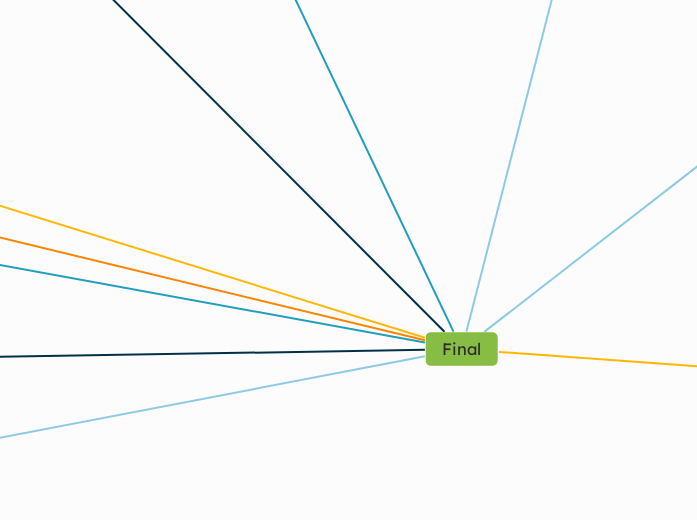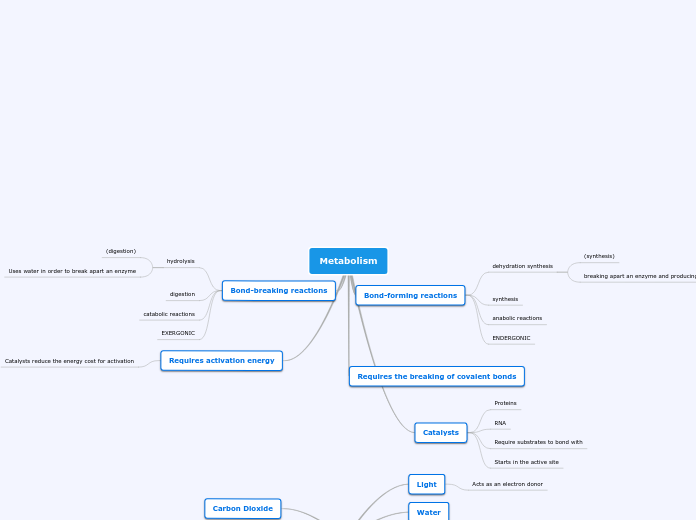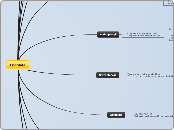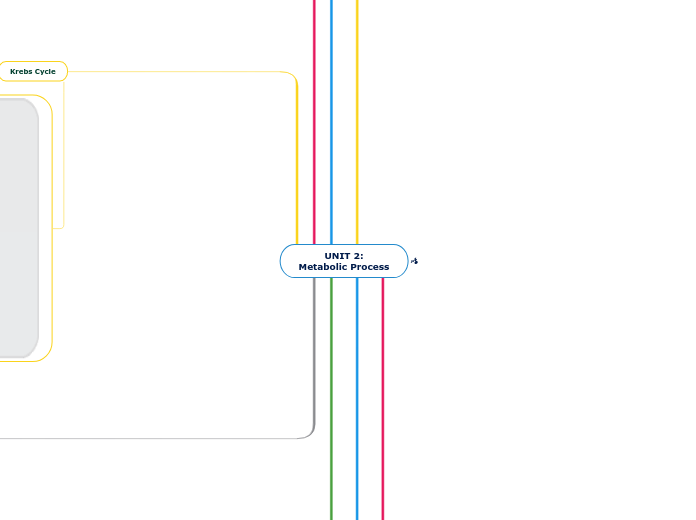Mutation
Translation
Protein Transport
Final
Cell Signaling
Light reactions in photosynthesis
ATP production: chemiosmosis (protons pumped across thylakoid membrane, create sproteon gradient, drives ATP synthase)
e-: from H20, gives to NADP+
location: thylakoid membrane of chloroplast
e-: from NADH and FADH2, gives to O2
ATP production: chemiosmosis through ATP synthase
location: inner membrane space
ATP production in aerobic respiration
Chemiosmosis
Lots of ATP produced
proton gradient drives ATP synthase, ADP + Pi --> ATP
ETC
O2 combines with e- and protons to form water
H+ pumped into intermembrane space, creates proton gradient
e- go through protein complexes
NADH and FADH2 made from glycolysis and citirc acid cycle, give e- to ETC
Citric acid cycle
ATP generation: 2 ATP made through substrate level phosphorylation
Glycolysis
ATP usage: 2 ATP consumed in first 5 steps of glycolysis
ATP generation: 2 ATP made thourgh substrate level phosphorylation
Tyrosine Kinase receptor pathway
activated signaling proteins --> cascades --> gene expression
Phosphorylated tyrosines --> signaling proteins
activates kinase --> autophosphorylation of tyrosine
Ligand binds to dimer
GCPR receptor
Pathway
cAMP activates first kinase
Adynylyl cyclase converts ATP --> cAMP
Activated G protein activates adenylyl cyclase
GPT --> GTP and activates G protein
Ligand binds to GCPR receptor
Membranes
Factors Affecting Fluidity
Fatty Acid Composition (unsaturated vs saturated)
Temperature (higher = more fluid)
Cholesterol (maintains fluidity at various temperatures)
Functions of membranes
Signal Transduction
Selective Permeability
Structure of Membranes
Glycolipids
Cell recognition, stability & protection
Glycoproteins
Cell-cell recognition & signal reception
Phosplipid Bilayer
Maintains Flexibility
Phospholipids
Hydrophobic Tails (fatty acids)
Water
Properties
Universal Solvent
Denser as Liquid than Solid
Expansion upon Freezing
High Heat of Vaporization
High Specific Heat
Cohesive Behavior
Biological Molecules
Nucleic Acids
Phosphodiester Bond
RNA
DNA
Nucleotides
Lipids
Energy
Membrane
Ester Bonds
Fatty Acids and Glycerol
Proteins
Enzymes
Amino Acids
Carbohydrates
Structure
Energy storage
Monosaccarides
Isomers
Trans Isomers
Cis Isomer
Chemical Bonds
Intermolecular
Ester
Phosphodiester
Van der Waals
Hyrdrophobic Interactiosn
Ion-Dipole
Hydrogen Bond
Intramolecular
Ionic Bond
Charges (+/-)
OH-
pOH
Hydroxide Ions
H+
pH
> 7
= 7
< 7
Basic
Neutral
Acidic
Hydrogen Ions
Covalent Bond
Peptide Bonds
Glycosidic Bonds
Nonpolar
Polar
Cell Structure
Cytoskeleton & Cell Motility
Intermediate Filaments – Mechanical support (keratin, nuclear lamina)
Microfilaments – Shape, movement, muscle contraction (actin, myosin)
Microtubules – Transport, cell division, structure (mitotic spindle, cilia, flagella)
Cell Junctions (Plant vs. Animal Cells)
Gap Junctions – Channels for direct cell communication (Animals - heart, neurons)
Desmosomes – Anchors cells together using keratin (Animals - skin, heart tissue)
Tight Junctions – Seals neighboring cells to prevent leakage (Animals - epithelial cells)
Plasmodesmata – Allows material exchange between plant cells (Plants)
Origin of Cells (Chemical Evolution & Prokaryotic Cells)
Miller-Urey Experiment
Oparin’s Bubble Hypothesis
Self-Replicating RNA (RNA World Hypothesis)
Formation of First Prokaryotic Cells
Early Earth Conditions
Prokaryotic vs. Eukaryotic Cells
Both Eurkaryotic and Prokaryotic
Cytoplasm
Cell Wall (plants, fungi, and bacteria)
Ribosomes
Prokaryotic Cells (Bacteria & Archaea)
Cell wall: Bacteria (peptidoglycan), Archaea (branched lipids)
No membrane-bound organelles
No nucleus, DNA in nucleoid region
Eukaryotic Cells (Plants, Animals, Fungi, Protists)
Unicellular or multicellular
Larger in size (10-100 µm)
Contain membrane-bound organelles
Have nucleus (DNA enclosed in membrane)
Eukaryotic Organelles & Functions
Cytoskeleton – Provides structure & facilitates cell movement (microtubules, microfilaments, intermediate filaments)
Vacuoles – Storage & water balance (large in plants, small in animals)
Chloroplasts (plants only) – Photosynthesis (light energy to chemical energy)
Peroxisomes Breaks down fatty acids & detoxifies harmful substances
r
Peroxisomes – Breaks down fatty acids & detoxifies harmful substances
Lysosomes – Digest macromolecules & waste (contains hydrolytic enzymes)
Golgi Apparatus – Modifies, sorts, & packages proteins for secretion
Smooth Endoplasmic Reticulum (SER) – Synthesizes lipids, detoxifies drugs, stores calcium
Rough Endoplasmic Reticulum (RER) – Modifies & folds proteins, has ribosomes
Ribosomes – Protein synthesis (free ribosomes → cytoplasmic proteins; rough ER ribosomes → secreted/membrane proteins)
Nucleus – Stores DNA, controls gene expression
Cell Energy
Cellular Respiration: ATP Production
ATP: The Energy Currency
ATP used in:
Chemical Work (Biosynthesis)
Transport Work (Active Transport)
Mechanical Work (Motor Proteins)
ATP Synthesis: ADP + Pᵢ → ATP (Requires energy)
ATP Hydrolysis: ATP → ADP + Pᵢ (Releases energy)
Photosynthesis: ATP & Energy Transfer
Comparison to Cellular Respiration
ATP is generated using a proton gradient in both mitochondria and chloroplasts.
Both processes use electron transport chains.
Calvin Cycle (Stroma)
ATP & NADPH used to fix CO₂ into glucose.
Light-Dependent Reactions (Thylakoid Membrane)
Electron transport & proton pumping to create ATP and NADPH.
Electron Transport Chain (ETC) & Chemiosmosis
ATP is generated by oxidative phosphorylation.
Proton (H⁺) gradient in the intermembrane space drives ATP Synthase.
Stages of Cellular Respiration
Oxidative Phosphorylation (ETC + Chemiosmosis) (Inner Mitochondrial Membrane)
Outputs: ATP (32-34), H₂O
Inputs: NADH, FADH₂, O₂
Citric Acid Cycle (Krebs Cycle) (Mitochondrial Matrix)
Outputs: ATP, NADH, FADH₂, CO₂
Inputs: Acetyl-CoA, NAD+, FAD
Pyruvate Oxidation (Mitochondrial Matrix)
Inputs: Pyruvate, NAD+
Outputs: Acetyl-CoA, NADH, CO₂
Glycolysis (Cytoplasm)
Inputs: Glucose, ATP, NAD+
Outputs: Pyruvate, ATP (net 2), NADH
Energy Transfer in Cells
Types of Metabolic Pathways
Anabolic Pathways ( Photosynthesis: synthesis of glucose using light energy)
Catabolic Pathways (Cellular Respiration: breakdown of glucose for ATP)
Laws of Thermodynamics
2nd Law: Energy transfer increases entropy.
1st Law: Energy is transferred and transformed, not created or destroyed.
Translation & Protein Trafficking
Two types of Ribosomes
Bound Ribosomes
Free Ribsomes
Permanent change in DNA sequence
Types of Mutations
Frameshift Mutations
Reading frame shift
Deletion
Insertion
Point Mutations
Nonsense
Creates premature stop codon
Missense
Changes one amino acid
Silent
No change in amino acid
Secretory Pathway
Final vesicle sends protein to:
Cel Membrane
Lysosome
Plasma Membrane
Golgi further modifies, sorts, packages.
Travels to Golgi Apparatus in vesicles.
Protein enters ER lumen ).
Signal peptide directs ribosome to ER membrane.
Steps of Translation
3. Termination
Ribosomal subunits separate.
Release factor binds
Ribosome reaches a stop codon (UAA, UAG, UGA).
2. Elongation
Amino acids are joined by peptide bonds
Matching tRNAs bring amino acids.
Ribosome moves along mRNA, reading codons.
1. Initiation
Large ribosomal subunit joins to form complete ribosome.
tRNA carries methionine to start codon
Small ribosomal subunits bind to mRNA at start codon (AUG)
mRNA -> Protein
Prokaryotes
No mRNA processing
smaller ribosomes
Eukaryotes
larger ribosomes
mRNA Processing: Capped, spliced, poly-A-Tail
DNA Structure & Replication
DNA as Genetic Material
Chargaff's rule (A = T, C = G)
DNA vs. protein as genetic material
Hershey & Chase bacteriophage experiment
Griffith's transformation experiment
DNA Replication
Features of Replication
Polymerases need a primer to begin synthesis
Requires dNTPs as substrates
High fidelity (1 error per 10⁶ bases, proofreading)
High speed (E. coli: 2000 nt/sec)
Leading vs Lagging Strand
Directionality matters: DNA pol adds only to 3′ end
Okazaki fragments
Lagging strand synthesized discontinuously
Leading strand synthesized continuously
Overview
Replication bubble
Bidirectional replication
Replication fork
Replication origin (ORI)
Meselson-Stahl experiment (14N vs. 15N labeling)
Semiconservative replication model
Enzymes in DNA Replication
Ligase – seals nicks between Okazaki fragments
DNA Polymerase I – removes RNA primers & fills gaps
Sliding clamp – increases DNA pol processivity
DNA Polymerase III – synthesizes new strand (5′→3′)
Primase – adds RNA primers
Single-Stranded Binding Proteins (SSBPs) – stabilize separated strands
Topoisomerase – relieves tension ahead of fork
Helicase – unwinds DNA
DNA Structure
Hydrogen bonds (between bases)
Phosphodiester bonds (covalent, between nucleotides)
Complementary base pairing: A–T (2 H-bonds), G–C (3 H-bonds)
Nitrogenous bases: purines (A, G) vs pyrimidines (T, C)
Sugar-phosphate backbone
Antiparallel strands (5′→3′ / 3′→5′)
Double helix model (Watson & Crick)
Transcription & RNA Processing
Transcription
Eukaryotes
RNA polymerase detaches
Cleavage factors cut RNA transcript
RNA polymerase reads termination factor
U --> T in RNA
RNA polymerase reads 5' --> 3'
synthesizes complementary RNA 3' --> 5'
Initiation
forms transcription bubble
Transcription factors bind to promotor sequnce
recruits RNA Polymerase II to bind to promotor
Promotor region
Enhancer sequences
Promotor = TATA box
Location
goes to cytoplasm for translation
Nucleus
Prokaryotes
Termination
Newly synthesized mRNA released
Termination factor reached
Elongation
RNA synthesis in the 5' --> 3' direction
RNA polymerase adds complementary nucleotides
C-G
A-U
Initiaton
Topoisomerase keeps it from rewinding and relieves stress
Helicase unwinds DNA at promotor
Unwinds DNA
Forms transcription bubble
RNA polymerase binds to promotor
promotor = specific sequece on DNA
Location
Cytoplasm
Transcription and Translation coupled here
RNA processing
Splicing
Alternative splicing
makes many proteins from one gene
Splicesome
snRNA + proteins
Joins exons
Removes introns
3' Poly-A tail
Poly-A Polymerase adds A LOT of A's to 3' end
~100-300
Cut RNA downstream
Cleavage factor binds
5' Cap
Protects mRNA
Happens as RNA is synthesized
Eukaryotes only


![True Jarrel [STUDENT] True Jarrel [STUDENT]](https://cdn1.mindomo.com/resources/img/about/mindomo-logo.png)






